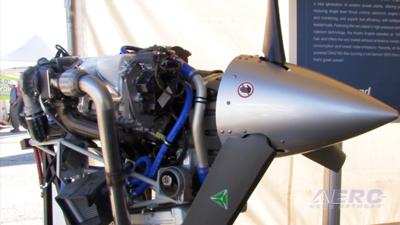Sat, Apr 24, 2021
AD 2021-09-04 Prompted By Reports Of An Oil Pump Blockage On E4 Model Diesel Piston Engines
The FAA is adopting a new airworthiness directive (AD) for all Austro Engine GmbH E4 and E4P model diesel piston engines.

This AD was prompted by reports of an oil pump blockage on E4 model diesel piston engines. This AD requires replacing a certain oil pump as well as the oil filter and engine oil. The FAA is issuing this AD to address the unsafe condition on these products. This AD is effective May 10, 2021.
Supplementary Information: The European Union Aviation Safety Agency (EASA), which is the Technical Agent for the Member States of the European Community, issued EASA Emergency AD 2021-0055-E, dated February 25, 2021. EASA Emergency AD 2021-0055-E was revised by EASA AD 2021-0055R1, dated March 10, 2021. EASA AD 2021-0055R1 was superseded by EASA AD 2021-0094, dated March 31, 2021 (referred to after this as “the MCAI”), to address the unsafe condition on these products. The MCAI states:
- Occurrences were reported of oil pump blockage on E4-A and E4-B engines.
- Subsequent investigation determined that the blockage was caused by oil contamination with casting sand from the production process of oil pump P/N E4A50-000-BHY. A blocked oil pump causes failure of the engine lubrication system. The root cause was found in the sand casted oil pump housing cleaning process, which was not properly performed.
- This condition, if not corrected, could lead to engine in-flight shut-down with consequent forced landing, possibly resulting in damage to the aeroplane and injury to occupants.
- To address this potential unsafe condition, Austro Engine published the SB at original issue (later revised to add affected part s/n) to provide instructions to replace the affected oil pumps, and EASA issued AD 2021-0055-E to require replacement of affected parts, and replacement of the oil and filter. Subsequently, [EASA] AD 2021-0055R1 was issued to refer to the SB at Revision 2, where certain engines were removed from the applicability. The SB at Revision 2 also expanded the list of affected part s/n, but without impact on [EASA] AD compliance, as all added s/n were still in stock and would not be delivered to operators anymore. Since that [EASA] AD was issued, it was determined that affected parts are installed on additional engines, and Austro Engine published the SB at Revision 3 to correct the list of affected engine s/n. An additional oil pump replacement option was introduced with SB Revision 4 (with no further change to the list of affected engines/parts).
- For the reason described above, this [EASA] AD retains the requirements of EASA AD 2021-0055R1, which is superseded, and refers to the SB at Revision 4 (including the additional engine s/n and the new oil pump replacement option). This [EASA] AD also expands the Applicability to include all engines where the affected part is eligible for installation, and prohibits (re)installation of an affected part on all engines.
You may obtain further information by examining the MCAI in the AD docket at https://www.regulations.gov by searching for and locating Docket No. FAA-2021-0311.
More News
He Attempted To Restart The Engine Three Times. On The Third Restart Attempt, He Noticed That Flames Were Coming Out From The Right Wing Near The Fuel Cap Analysis: The pilot repor>[...]
Make Sure You NEVER Miss A New Story From Aero-News Network Do you ever feel like you never see posts from a certain person or page on Facebook or Instagram? Here’s how you c>[...]
From 2009 (YouTube Edition): Leading Air Show Performers Give Their Best Advice for Newcomers On December 6th through December 9th, the Paris Las Vegas Hotel hosted over 1,500 air >[...]
Aero Linx: NASA ASRS ASRS captures confidential reports, analyzes the resulting aviation safety data, and disseminates vital information to the aviation community. The ASRS is an i>[...]
“For our inaugural Pylon Racing Seminar in Roswell, we were thrilled to certify 60 pilots across our six closed-course pylon race classes. Not only did this year’s PRS >[...]
 NTSB Final Report: Rutan Long-EZ
NTSB Final Report: Rutan Long-EZ ANN FAQ: Turn On Post Notifications
ANN FAQ: Turn On Post Notifications Classic Aero-TV: ICAS Perspectives - Advice for New Air Show Performers
Classic Aero-TV: ICAS Perspectives - Advice for New Air Show Performers ANN's Daily Aero-Linx (06.28.25)
ANN's Daily Aero-Linx (06.28.25) Aero-News: Quote of the Day (06.28.25)
Aero-News: Quote of the Day (06.28.25)



